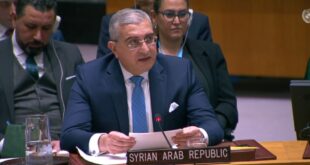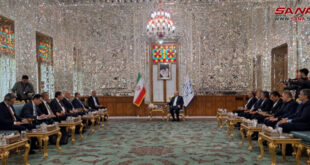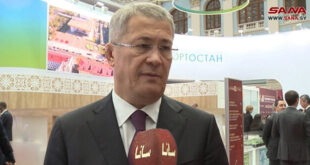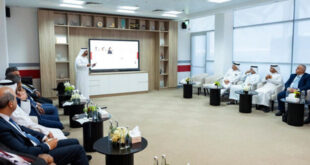Hama, SANA- Al-Ghab area is one of the most fertile agricultural areas in Syria and the most diverse in the production of crops whether the strategic crops or the beans, tobacco, and the medicinal and aromatic plants.
Director of the General Commission for Management and Development of al-Ghab Plain Eng. Awfa Wassouf said that the soil in the area enjoys standard specifications which suit most types of winter and summer crops, therefore, agriculture has been the main source of income for the locals.
He indicated that the presence of forests and bushes has made al-Ghab area a picturesque tourist destination and it is considered as one of the most important areas in breeding livestock such as cows, goats and buffalos, in addition to poultry breeding.
31 thousand heads of cows, 925 heads of buffalos and 325 thousand heads of goats and sheep are being raised in the area which contributes to producing huge amounts of milk and meat annually that meet the needs of the local market.
He indicated that the Commission works on implementing the decided agricultural plan and increasing the production and improving its quality, in addition to providing the needed services and the necessary requirements of work to develop al-Ghab area in the agricultural domain.
The Commission also works on achieving the maintenance and investment of irrigation channels and drainage and implementing modern agricultural techniques, in addition to encouraging the farmers to use the modern irrigation methods and to make an optimal investment of the available water resources and developing the local society in al-Ghab area.
Chairman of the Irrigation Directorate Hassan Mahfoud said that the farms of al-Ghab area are irrigated through a wide network of irrigation channels and they are provided with a network of basics and secondary channels used to drain the slain water from the agricultural lands after irrigating them, and to drain the surplus of rainwater.
Mahfoud added that the irrigation network is supplied with water from the dams of the lakes of Quntineh, al-Rastan and Mharda on the stream of the Orontes River before it enters al-Ghab area.
He indicated that the total number of wells in al Ghab area is about 5000 and their annual water supply reaches up to 176 million cubic meters that are used in irrigating crops and fish production, in addition to providing drinking water as al-Ghab basin needs 500 million cubic meters of water annually and this water deficiency is solved through using the agricultural drainage water.
For his part, Chairman of the Livestock Directorate Wafiq Zarouf said that the lands of al-Ghab area are fertile, therefore, there is a clear diversity in the planted crops in them which has contributed effectively to ensuring the needs of the local market.
Zarouf added that wheat is annually planted over an area of about 50 thousand hectares, the medicinal and aromatic plants over an area of 3,500 hectares, spring potato over an area of 1,200, the summer and winter vegetables over an area of 3000 hectares and beans over an area of 2800 hectares.
Tobacco is also planted over an area of 1,300 hectares and fodders planted over an area of 1,100 hectares while the oil crops are planted over an area of 2500 hectares.
The General Commission for Management and Development of al-Ghab Plain plays a key role in producing various types of saplings to be planted by the public and private sectors and it works on protecting the forests and bushes against the fires and overgrazing to contribute to preserving them to be a distinguished tourist destination and a basic factor for the biodiversity.
Ruaa al-Jazaeri
 Syrian Arab News Agency S A N A
Syrian Arab News Agency S A N A




